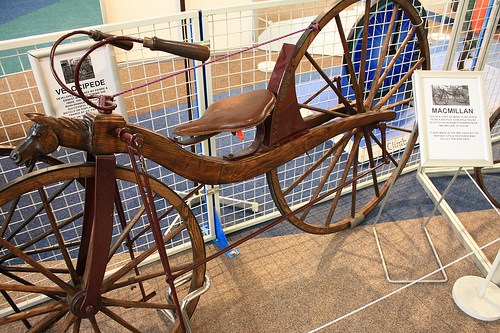In the world of bikes, materials have played a key role in transforming the industry.
In 1818 the ‘swiftwalker’ were made predominantly of wood. At 25Kg they were not light and there were no pedals. Maximum speeds were 5-6 mph unless downhill, where the lack of brakes became an issue.
Wood specific strength/kg = 12-120KN.m/Kg. Large variations in strength.
Advances in metallurgy allowed for the frame and tyres to be improved for durability and strength. The Penny Farthing weighs below 20Kg and can go 15mph: safety was the issue.
Steel specific strength = 46KN.m/Kg
In the late 19th Century, the “safety” bike was born; a reduction gear and a chain drive added to the weight and cost, but made cycling much more accessible.
In 1886 Mannesmann patented rolling seamless steel and this gave us the production method to make lighter bikes, by placing the material better. The modern steel bike has an average weight under 15Kg and speeds of 15mph are easy.
Chrome Steel Specific strength = 80KN.m/Kg
Production of aluminium requires a lot of energy, and was only sorted out in 1920 with mass produced for WW2. This material is expensive about 20x for the same weight of steel. Bikes weights can be reduced, but prices clearly rise. Processing methods are similar to steel.
Specific strength =200KN.m/Kg.
In 1963 Carbon fibre production process was patented by the MOD; it has good durability and high elongation. The material cost is now in the region of 10x that of steel, but processing is very different. Processing was initially very manual with expensive capital infrastructure required.
With volume the tooling costs can be mitigated see Walmart carbon bike $400. New materials and processes allow for curing without autoclaves and ovens. Designs are no longer limited to the basic tubes of steel or aluminium and more complex shapes are possible saving weight and improving the aerodynamics.
However, in order to gain the most from the material in terms of weight saving the material needs to very thin. Normal use is fine but loading the frame in the wrong direction can easily cause damage.
Specific Strength 780-2400KN.m/Kg
